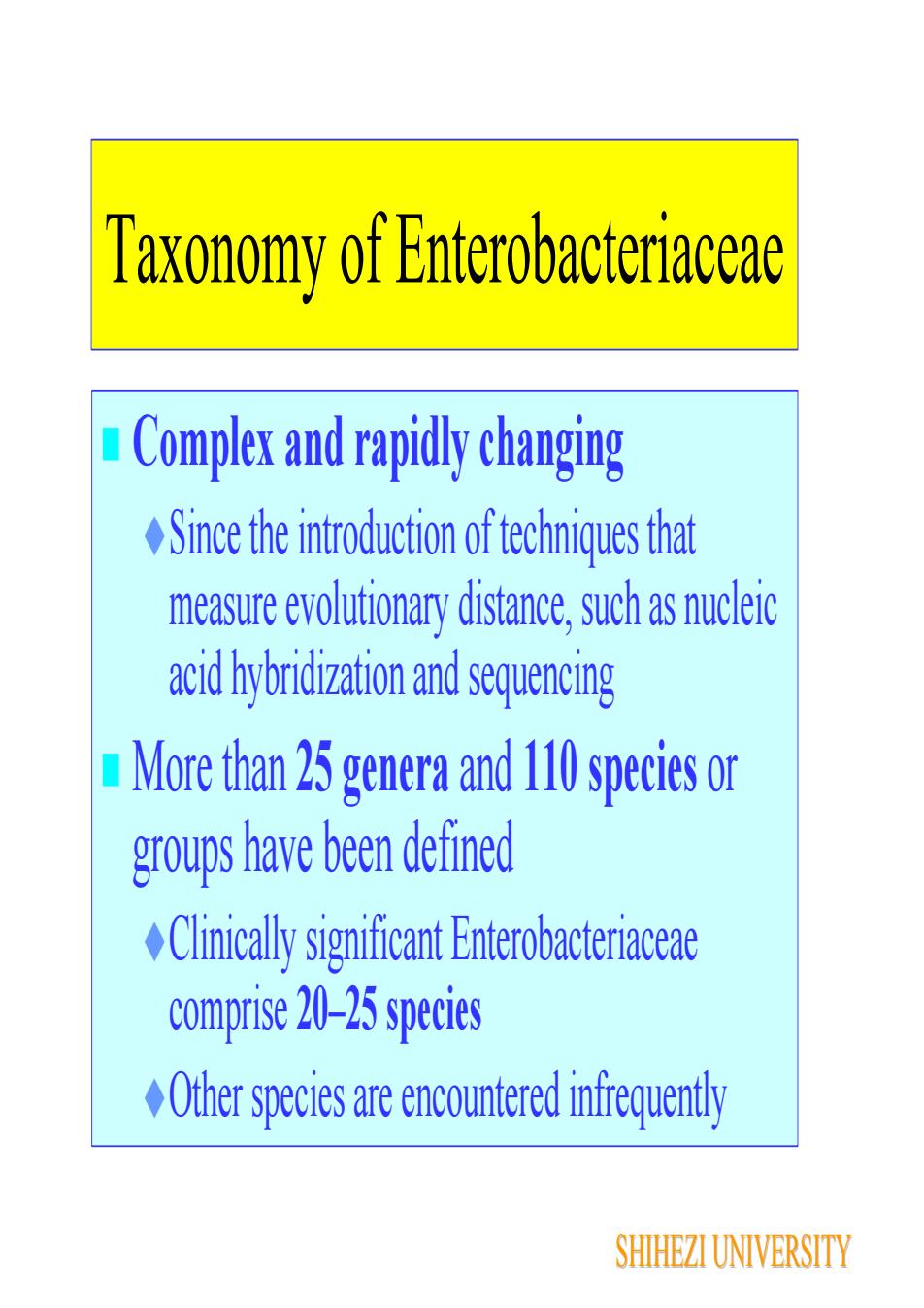
Taxonomy of Enterobacteriaceae Complex and rapidly changingSince the introduction of techniques thatmeasure evolutionary distance, such as nucleicacid hybridization and sequencing More than 25 genera and 110 species orgroups have been definedClinically significant Enterobacteriaceaecomprise 20-25 speciesOther species are encountered infrequentlySHIHEZI UNIVERSITY
Taxonomy of Enterobacteriaceae Complex and rapidly changing Since the introduction of techniques that measure evolutionary distance, such as nucleic acid hybridization and sequencing More than 25 genera and 110 species or groups have been defined Clinically significant Enterobacteriaceae comprise 20–25 species Other species are encountered infrequently SHIHEZI UNIVERSITY
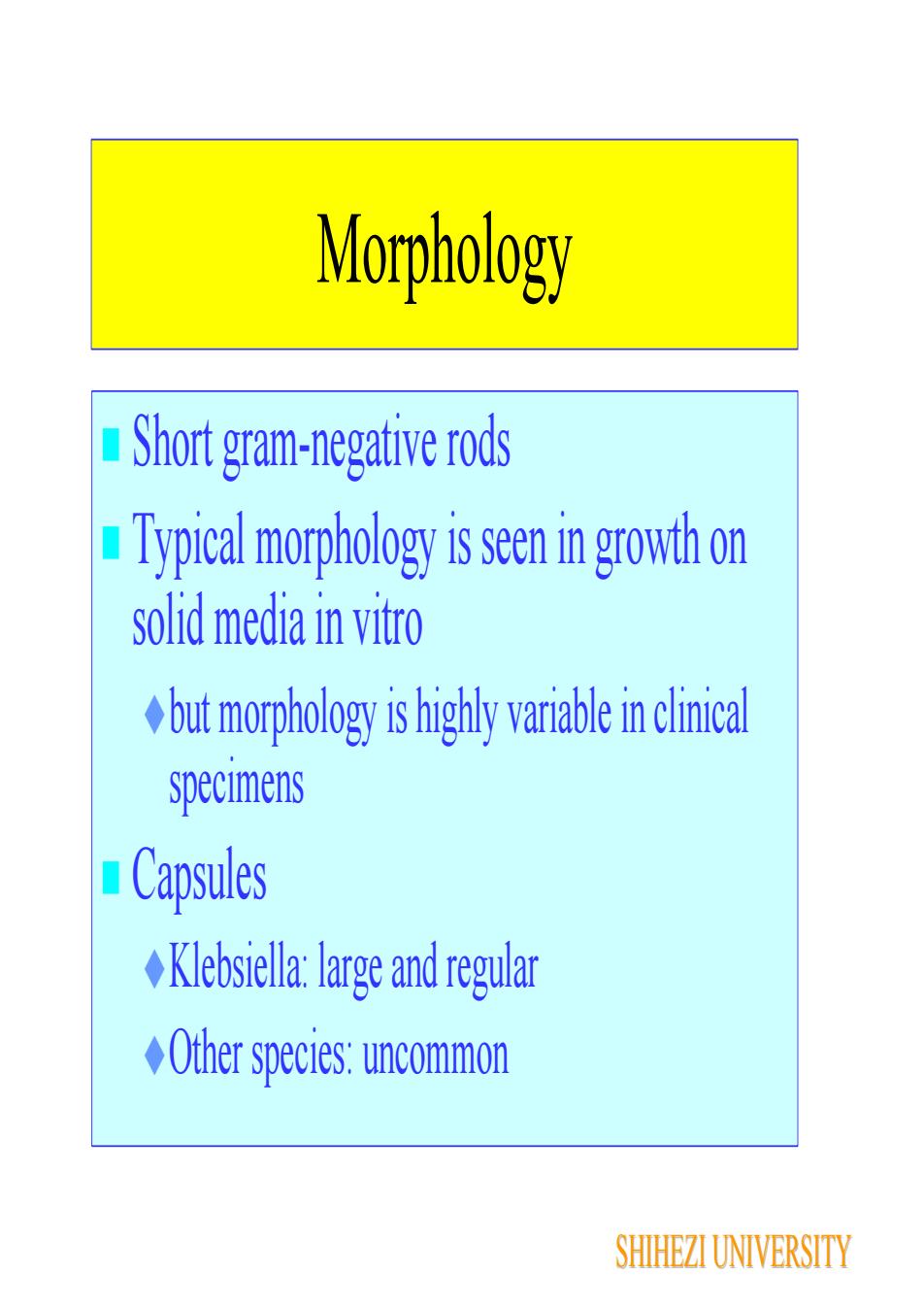
MorphologyShort gram-negative rodsTypical morphology is seen in growth onsolid media in vitrobut morphology is highly variable in clinicalspecimensCapsulesKlebsiella: large and regularOther species: uncommonSHIHEZI UNIVERSITY
Morphology Short gram-negative rods Typical morphology is seen in growth on solid media in vitro but morphology is highly variable in clinical specimens Capsules Klebsiella: large and regular Other species: uncommon SHIHEZI UNIVERSITY
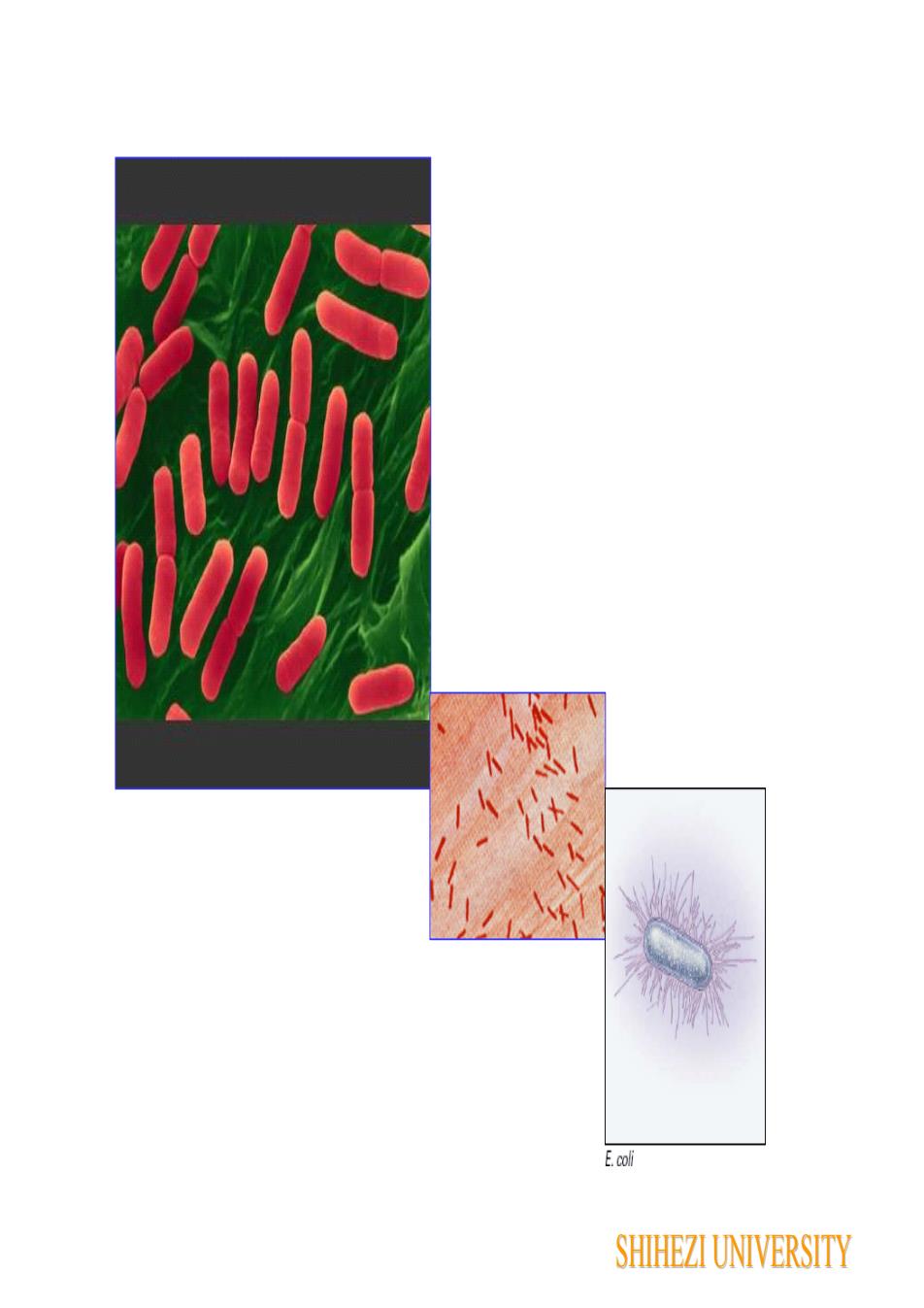
E.coliSHIHEZI UNIVERSITY
SHIHEZI UNIVERSITY
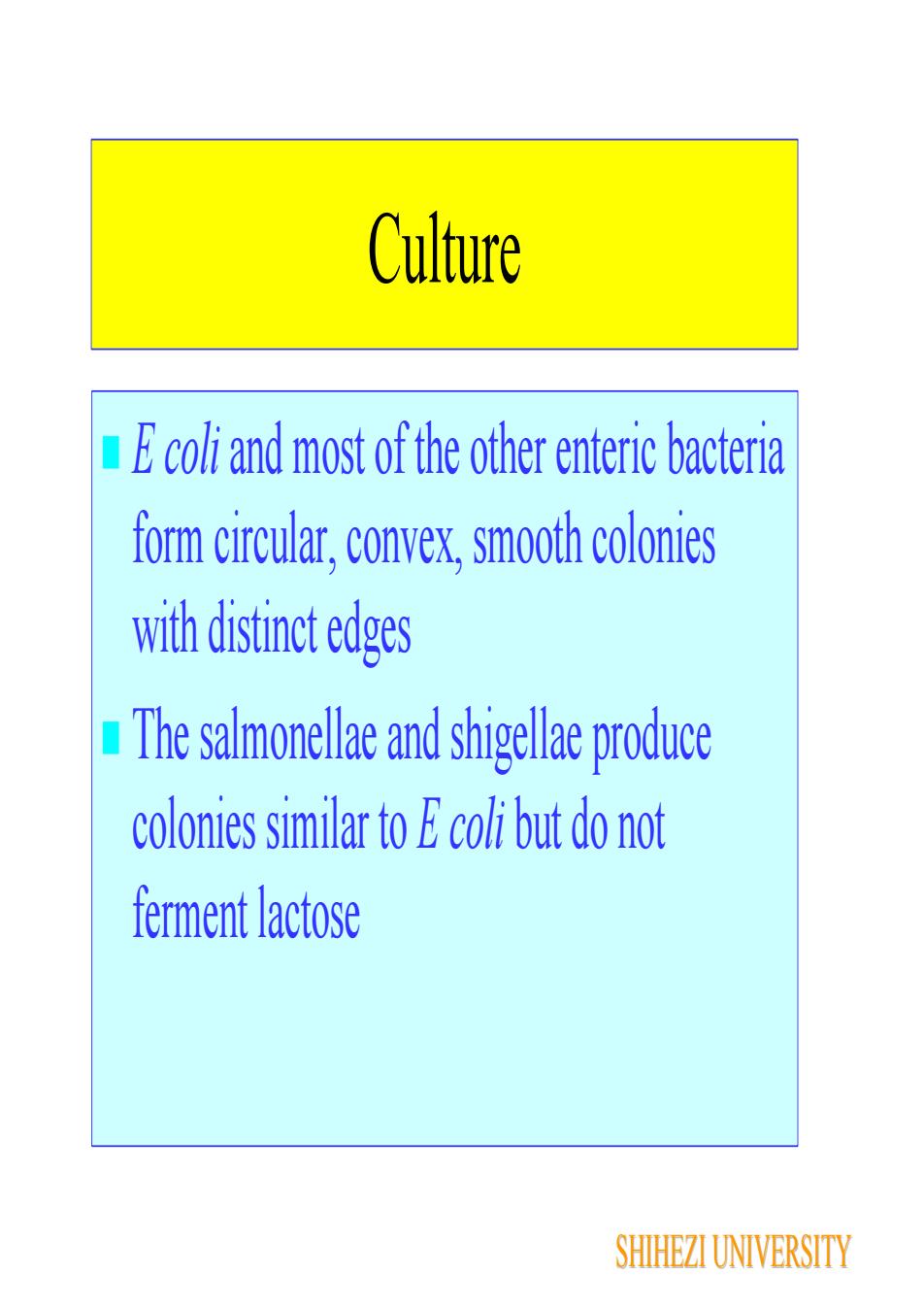
CultureE coli and most of the other enteric bacteriaform circular, convex, smooth colonieswith distinct edgesThe salmonellae and shigellae producecolonies similar to E coli but do notferment lactoseSHIHEZI UNIVERSITY
Culture E coli and most of the other enteric bacteria form circular, convex, smooth colonies with distinct edges The salmonellae and shigellae produce colonies similar to E coli but do not ferment lactose SHIHEZI UNIVERSITY
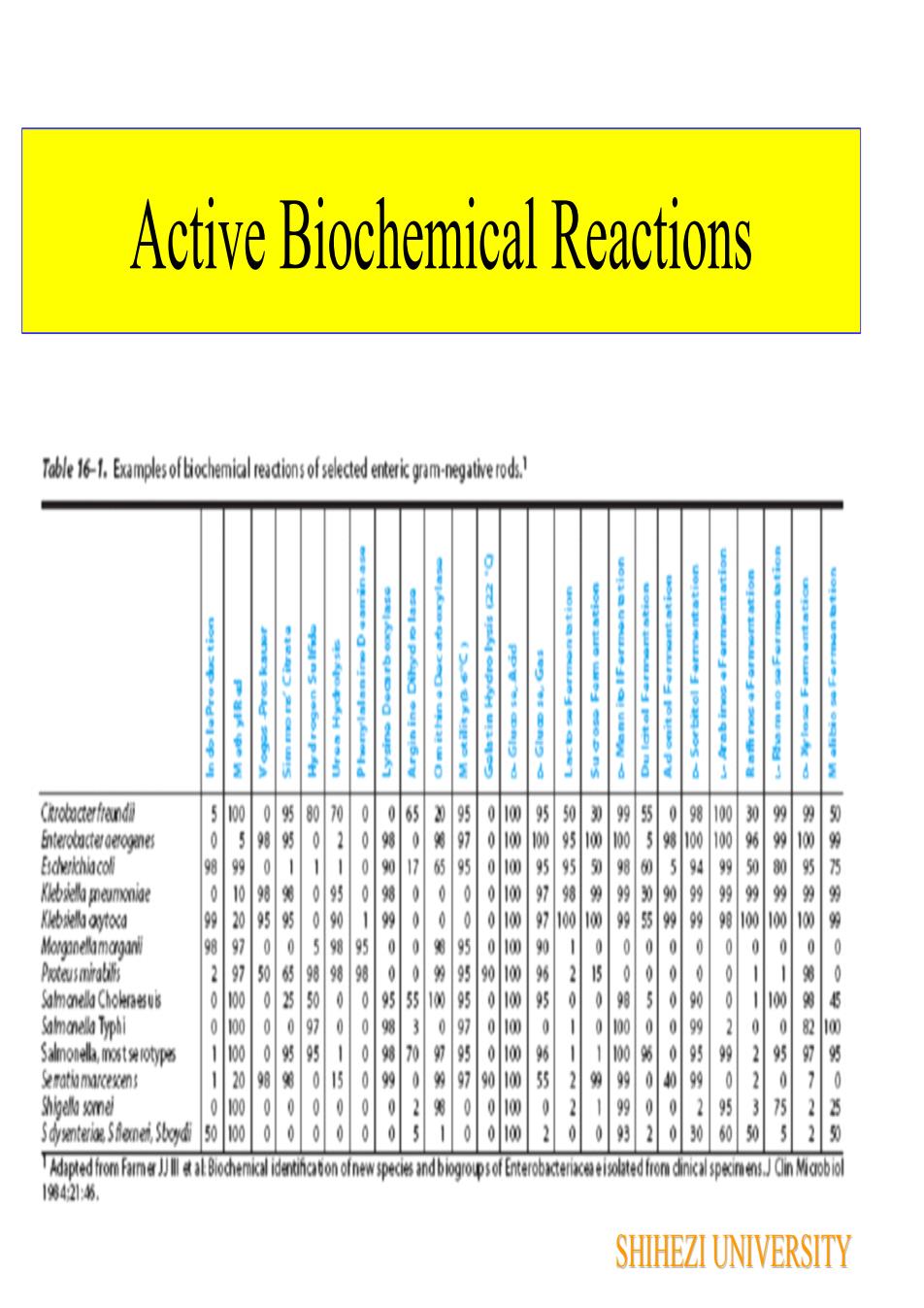
Active Biochemical ReactionsTbmcmoeergmaCrobacterfteandiEnterolacterderoganesEscherichiacolKieb sela meunoniaeKlebiela aytocaMorganellamaganlPateusmiratilsSamanellaChokrasuksSalmanelaTyphiSalnonlamostserotypsSematiamarcexensShigello someiS dysenterioeSfexneni,SboydTAdapted fromFarne196421:46,SHIHEZIUNIVERSITY
Active Biochemical Reactions SHIHEZI UNIVERSITY